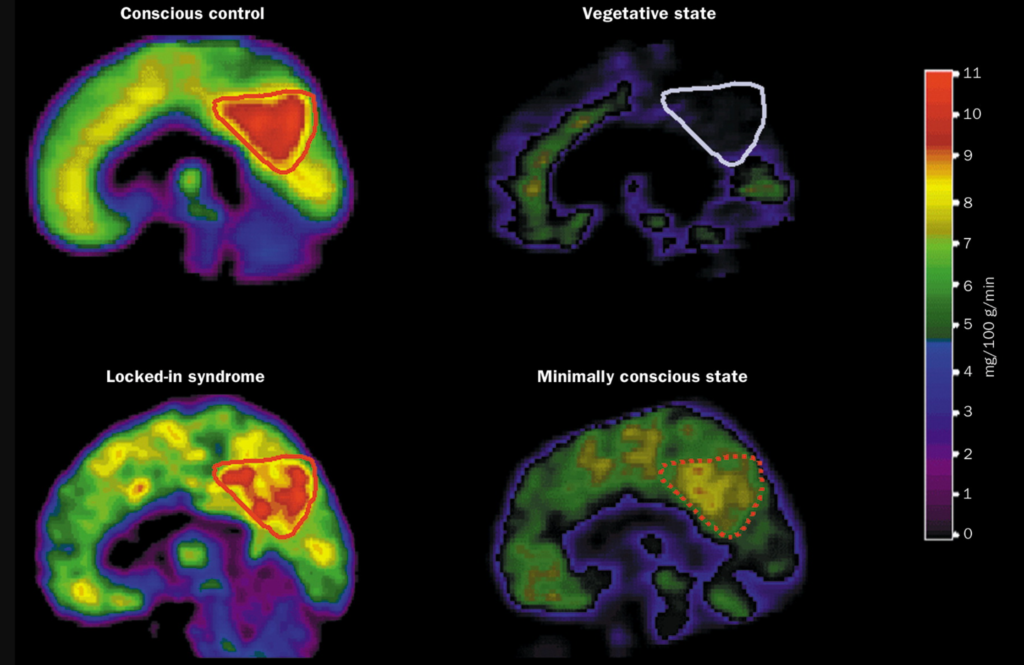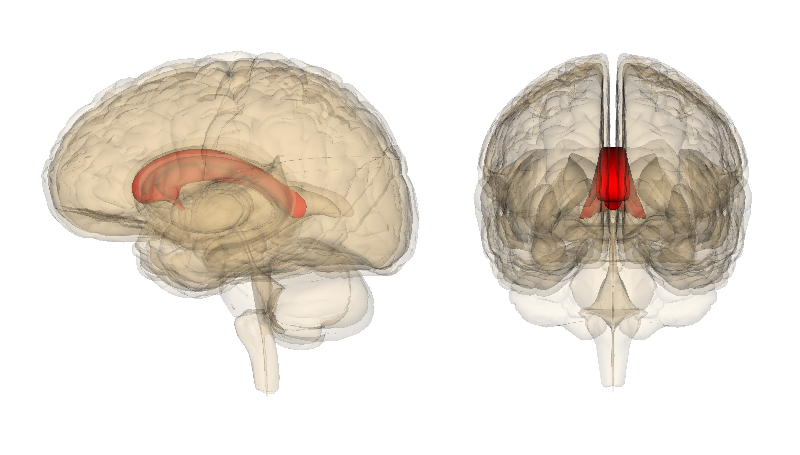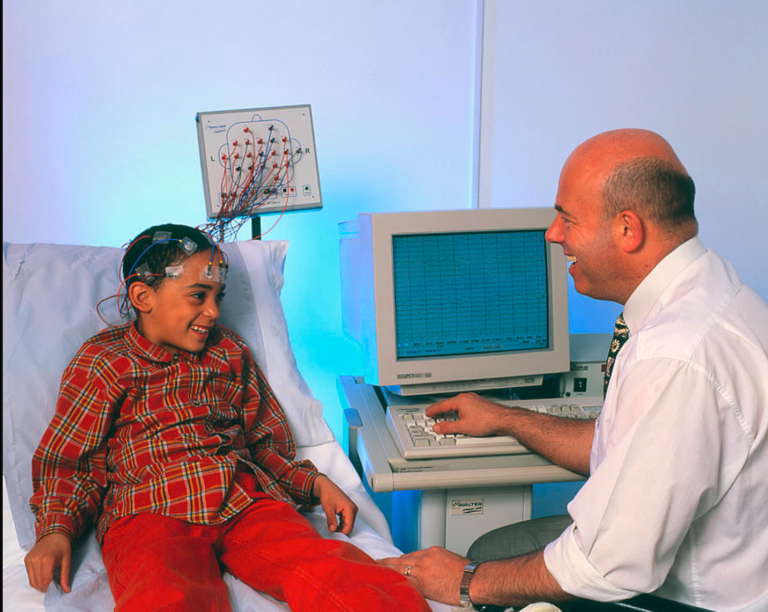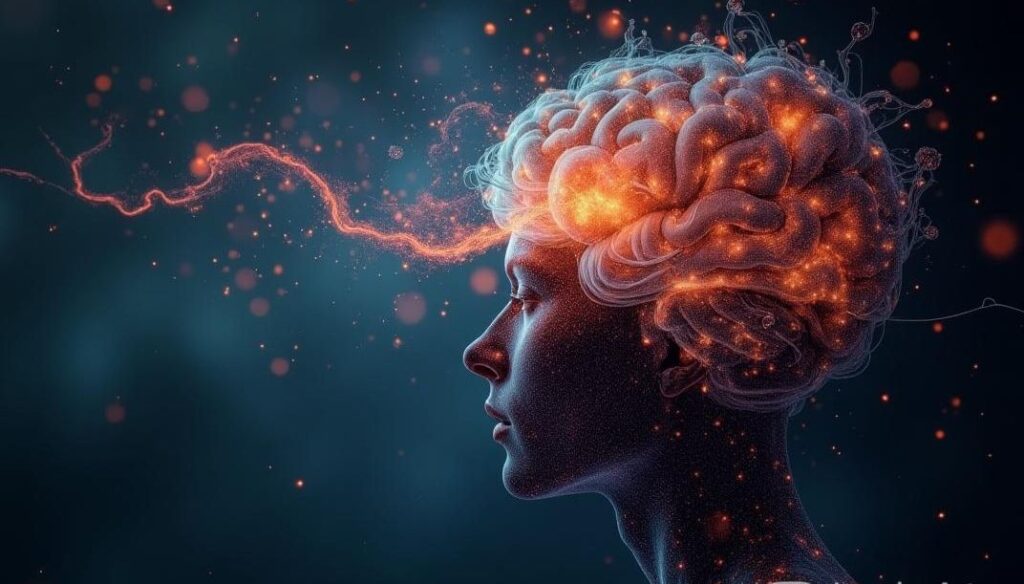Does Consciousness Create Reality?
An exploration of brainwaves, awareness, and the limits of the observable universe

Introduction: The Age-Old Question in a Modern Frame
“Reality is merely an illusion, albeit a very persistent one.”
— Albert Einstein
For centuries, mystics, philosophers, and physicists have wrestled with one of the most mind-bending questions of all time:
Does our consciousness shape reality — or is reality independent of us?
In recent decades, neuroscience and quantum physics have joined this age-old debate with powerful tools. Brain scans, electric impulses, and quantum experiments all raise one radical possibility: that reality may not just be something we passively observe, but something we actively create.
And yet, this entire question hinges on a word that remains difficult to pin down:
What exactly is consciousness?
Even the most brilliant minds in science and philosophy struggle to define it precisely. But some of the most insightful voices have tried:
“Consciousness is what makes the mind-body problem really intractable.”
— David Chalmers, Philosopher
“Consciousness is the fact that we are aware of our thoughts, feelings, and sensations.”
— Thomas Metzinger, Neuroscientist
“I think, therefore I am.”
— René Descartes, Philosopher
In essence, consciousness is the subjective experience of awareness — our ability to recognize that we exist, feel, remember, decide, and reflect. It’s the invisible thread that connects all aspects of our reality — from the color of the sky to the meaning of pain.
But how do we measure something so elusive?
How do we even know when someone is conscious — or not?
To begin answering that, we must first understand how consciousness is categorized, especially in clinical and neurological terms. Through cases of coma, vegetative states, and minimally conscious conditions, neuroscience reveals that consciousness isn’t an all-or-nothing switch — it’s a spectrum, deeply layered and incredibly fragile.
Here’s a quick overview of how modern science defines this spectrum:
Shades of Awareness: Clinical States of Consciousness
| Condition | Level of Awareness | Brain Activity | Communication |
|---|---|---|---|
| Coma1 | No awareness | Very low brain activity; no sleep-wake cycle | No purposeful responses; unresponsive |
| Vegetative State2 | No conscious awareness | Sleep-wake cycles present; limited cortical activity3 | No verbal response; may open eyes or reflexively move |
| Minimally Conscious State | Fluctuating, partial awareness | Some cortical activity3; intermittent purposeful behavior | May respond inconsistently to commands |
| Locked-In Syndrome | Fully aware but unable to move or speak | Normal cortical activity3; intact cognition | Communicates via eye movements or blinks |
| Split-Brain Condition | Fully conscious, but disconnected awareness between hemispheres | Both hemispheres active; impaired inter-hemispheric transfer | May respond differently to stimuli in each visual field; difficulty integrating actions |
1 Coma: A deep state of unconsciousness where a person cannot wake up or respond to surroundings.
2 Vegetative State: A condition where someone appears awake (may open eyes or move) but shows no awareness of themselves or environment.
3 Cortical Activity: Brain signals in the outer layer (cortex) responsible for thinking, perception, and awareness.
These distinctions aren’t just medical — they offer powerful insight into the nature of awareness itself. From split-brain patients to people whose minds were “awake” inside comatose bodies, we begin to see how consciousness might not just perceive the world, but generate our experience of it.
In the sections that follow, we’ll explore some of the most mind-opening questions about how consciousness and reality might be connected. Here’s what we’ll cover:
- How brain activity and waves can show signs of awareness—even when someone seems completely unconscious
- How the brain doesn’t just record reality—but actually builds it, through the lens of clinical neuroscience
- Strange ideas from quantum physics that suggest reality might change just because we observe it
- What happens in the minds of people who underwent corpus callosotomy, and how they challenge what we think we know about awareness
- And finally, what powerful new theories like Integrated Information Theory (IIT) and Panpsychism say about whether consciousness exists in all things—even the universe itself.

This brain scan visualizes how levels of consciousness correlate with neural activity—warm colors (red/yellow) show high brain activity, while cool colors (blue/purple) indicate reduced or minimal activity.
1. Still Consciousness: When the Brain Speaks Without the Body
Neuroscience has made enormous strides in understanding consciousness, especially through studies of comatose and vegetative patients.
EEG and fMRI Studies
One groundbreaking study by Adrian Owen and his team used fMRI (functional Magnetic Resonance Imaging) to detect signs of consciousness in vegetative patients. A notable patient, who showed no outward signs of awareness, was asked to imagine playing tennis. Surprisingly, her brain activity mirrored that of healthy individuals asked to do the same—showing activation in the premotor cortex.
What does this mean?
Despite an unresponsive body, the mind—or more accurately, the conscious processing—was present. Consciousness, therefore, might not be dependent on behavior or language, but on internal neural patterns.
Anecdotal Echoes
Stories abound of coma patients later reporting detailed awareness of their surroundings. While anecdotal, these accounts are gaining respectability as science uncovers mechanisms like neural oscillations, thalamocortical connectivity, and residual awareness, which testify to the concept of the brain being active amidst apparent stillness, challenging the binary view of “conscious vs unconscious.”

2. The Brain’s Electric Symphony: Detecting Life through Waves
In clinical neuroscience, EEG (electroencephalography) is used to detect electrical activity in the brain. Here’s where things get even more curious.
When Signals Travel Through the Body
Experiments have shown that when external stimuli—like focused ultrasound or electrical pulses—are directed at the brain, the propagation of signals across different brain regions may indicate retained consciousness.
• If the wave spreads and returns, triggering feedback loops in the cortex and limbic system, it’s a sign that the brain is engaging in global processing—often associated with conscious awareness.
• If the signal remains localized or dissipates quickly, it might indicate the absence of such integrative function—suggesting unconsciousness.
This idea forms the basis of something called the Perturbational Complexity Index (PCI). In simple terms, it works like this: scientists send tiny magnetic pulses into the brain (using a method called transcranial magnetic stimulation, or TMS) and then record how the brain reacts using EEG (a tool that measures brainwaves). The more complex and active the brain’s response, the more likely it is that the person is conscious — even if they can’t show it on the outside.
Yet while PCI offers a quantifiable way to detect consciousness, it doesn’t explain what consciousness is — it simply helps measure when and how it may emerge. If the brain is like a screen and reality the projected film, consciousness may be the lens that brings the image into focus. But we still don’t know who — or what — is behind the lens, or whether it even exists as a single thing.
3. Quantum Parallels: Observing Reality into Existence?
The field of quantum mechanics lends a metaphorical yet tantalizing hand.
The Observer Effect
In quantum experiments like the double-slit experiment, particles behave differently when observed. When not observed, photons act as waves—exploring multiple possibilities. But when an observer is present, they “collapse” into a single state.

- The interference pattern (green bands on the screen) indicates that particles (like electrons or photons) are behaving like waves, creating constructive and destructive interference.
- If there were a detector placed at the slits to observe “which slit” the particle went through, this interference pattern would collapse into just two bright bands, indicating particle-like behavior instead.
Many interpret this to mean that observation determines outcome. While it’s a hotly debated interpretation (many physicists attribute the result to quantum decoherence rather than “conscious” observation), it has become a popular metaphor in discussions about consciousness.
Let’s dive a bit deep to gain a fundamental understanding of what quantum decoherence is, to resonate better with the metaphysical aspect of consciousness.
In quantum physics, a tiny particle (like an electron or photon) doesn’t just stay in one fixed state. It can exist in many possible states at the same time — a bit like being “here” and “there” together. That’s called superposition. It’s not just theory — it’s been proven in labs.
But here’s the twist: when that tiny particle starts interacting with the outside world — with trillions of other particles, heat, light, or even air molecules — it kind of loses its “quantum magic.” It decoheres, which means all those multiple possibilities shrink down to just one outcome — the one we see in real life. Basically, it stops behaving quantum-y and starts behaving “normal.”
That’s why we don’t see tennis balls or people acting like waves or appearing in two places at once — even though technically, every bit of matter (including us) has a wave nature. We just interact with too much of our environment to hold on to those wave-like possibilities.
4. The Split Brain: What Happens When the Bridge Breaks?
To comprehend how consciousness may construct reality, we must first explore how the brain itself is wired to produce a seamless perception of the world — and what happens when that wiring is disrupted.
At the heart of this system lies the corpus callosum, a dense bundle of nerve fibers connecting the brain’s left and right hemispheres. It acts as a neural bridge, allowing both sides of the brain to communicate and share information. While the left hemisphere is typically dominant in language and logical reasoning, the right hemisphere is more involved in visual-spatial processing, emotional tone, and holistic understanding.
In ordinary circumstances, the corpus callosum ensures coherence between the two hemispheres. But what if this bridge is severed?

The Case of Patient W.J.: Two Minds in One Body?
In the early 1960s, Patient W.J., a World War II veteran, became the first person to undergo a complete corpus callosotomy to relieve life-threatening epilepsy. The surgery, while successful in curbing seizures, had an unexpected consequence: it split his brain into two functionally independent systems of consciousness.
W.J. became the subject of historic experiments by neuroscientists Roger Sperry and Michael Gazzaniga, pioneers of split-brain research. Their tests revealed shocking results:
- When W.J. was shown an image in his right visual field (processed by the left hemisphere), he could name what he saw.
- But when an image was shown in his left visual field (processed by the right hemisphere), he couldn’t verbalize what he saw — yet his left hand (controlled by the right hemisphere) could correctly select related objects by touch.
This meant that although both hemispheres perceived the world, only the left hemisphere had access to language — and without the corpus callosum, the right hemisphere couldn’t “speak up.” This raised a mind-bending question:
Was there more than one conscious entity within the same brain?
A Brain at War With Itself?
Further tests showed even stranger phenomena. In some patients, one hand would button a shirt while the other unbuttoned it. In others, one hand would reach for an object while the other slapped it away. It was as though two separate wills were struggling for control — each with its own perception of reality.
W.J. himself, in one documented event, appeared puzzled when his left hand selected a card that he couldn’t name. He insisted he hadn’t seen it — though his hand revealed otherwise.
Such experiences illustrate that consciousness is not monolithic. The unity we experience is not automatic — it is constructed through the communication between the hemispheres.
What This Tells Us About Reality
These experiments suggest that our conscious experience is not merely a mirror of the outside world — it is a synthesis, a narrative assembled by the brain.
The left hemisphere in particular was shown to be a “storyteller.” When presented with conflicting input from the right hemisphere, it would often invent explanations to justify the behavior it couldn’t logically account for — a phenomenon Gazzaniga termed the “interpreter.” For example, when W.J.’s right hemisphere was shown a snowy scene and his left a chicken claw, he verbally explained choosing a shovel (used for snow) by saying, “The chicken goes in the chicken coop, so you need the shovel to clean it.”
This means:
Our conscious mind is not a passive observer but a meaning-maker, constantly trying to stitch together a reality from fragments.
How Does This Relate to the Idea of Consciousness Creating Reality?
If damage to the corpus callosum can result in two realities forming within a single skull, then consciousness isn’t merely recording reality — it is actively constructing and shaping it. Each hemisphere, though working with the same body, can form a different version of “what’s real.”
This challenges the idea of an objective, uniform reality that exists independently of how it’s perceived. Instead, what we “see” — and even what we “know” — may be deeply dependent on the integrity and integration of our neural systems.
The case of W.J. powerfully illustrates that:
- Consciousness is emergent, not fixed.
- Unity of consciousness is a product of communication, not a given.
- Perception of reality can split and diverge without shared interpretation.
By exploring W.J.’s experience, we can begin to understand that our minds are not just windows into the world — they are architects of it.
This prepares us for deeper discussions, like those found in Integrated Information Theory and panpsychism, where reality itself may be infused with consciousness.

5. The Broader Landscape: Panpsychism and Integrated Information Theory
As we zoom out from the cellular and electrical to the cosmic and philosophical, two theories offer profound insights into the roots of consciousness:
Panpsychism: A Universe Aware?
Panpsychism proposes that consciousness is not exclusive to complex organisms but is a fundamental feature of all matter. While this doesn’t imply that rocks or atoms “think,” it suggests that a rudimentary form of awareness exists in all physical entities—like mass or gravity. Though still debated, the idea is gaining traction as scientists and philosophers look for ways to reconcile subjective experience with physical law.
Integrated Information Theory (IIT): Quantifying Consciousness
Proposed by Giulio Tononi, IIT suggests that consciousness corresponds to the system’s ability to integrate information. This is measured as a value called Φ (phi).
Key ideas:
- The more complex and interconnected the neural activity, the higher the Φ, and thus the deeper the consciousness.
- Even non-human systems (like AI or animals) could theoretically be conscious if they exhibit high integration.
Why it matters:
IIT supports the idea that consciousness isn’t binary. Instead, it exists on a spectrum—meaning your sense of reality may become more “real” depending on how deeply integrated your brain activity is at any given moment (like dreaming, meditating, or hallucinating)
Both Pansychism and IIT push the boundaries of what consciousness might be, yet each comes with critics and unanswered questions. Whether consciousness is intrinsic to matter or emergent from complexity remains one of the grand puzzles.

Conclusion: The Mirror of Mind
As we’ve traveled through science and philosophy — from the flicker of quantum particles to the silent awareness of a locked-in brain — one theme stands out: Consciousness is not a passive witness. It may be the canvas on which reality itself is painted.
The mind is not merely a receiver, but a sculptor of the world we live in. Without awareness, reality is meaningless. Without a witness, even time has no one to pass through. This brings us to the essential question:
How does consciousness shape reality?
Perhaps not by altering the atoms of the cosmos, but by giving form, meaning, and texture to the experience of existence.
Carl Jung captured this beautifully:
“Who looks outside, dreams; who looks inside, awakes.”
The quote suggests that while external pursuits may spark imagination, true awareness and transformation come from inner reflection.
Ultimately, for all the breakthroughs and theories, consciousness remains a frontier — one we are only beginning to map, with more questions than answers still lighting the path ahead.
Reality, then, is a partnership between the seen and the seer. The universe may go on without us — but our universe, the one built from sensations, memory, and meaning, would not.
In the end, maybe the universe is not something we stand apart from, trying to understand.
Maybe the universe is something that awakens through us.
After all, Cogito ergo sum — it is through our conscious thought that reality becomes real. 🔮
Image Courtesy
- Brain States PET Scan – The Lancet Neurology
- Neurocognition – Johns Hopkins Medicine
- Double Slit Experiment – Bing Image
- Doctor Monitoring Brain Activity – Science Photo Gallery
- Corpus Callosum – Queensland Brain Institute
- Consciousness Chart – Medium
Author’s Note 🖋️
This post isn’t written from a place of expertise, but from fascination. I’m a student of ideas, not their master. These reflections emerged from podcasts, documentaries, and a trail of late-night questions. Writing this was my way of threading together what I’ve been learning — not to claim conclusions, but to keep curiosity awake. There’s still so much I don’t know — and maybe that’s the point. If this exploration stirred something within you too, then I’m glad we’re wondering together. 🌌
— Cogito, ergo sum



